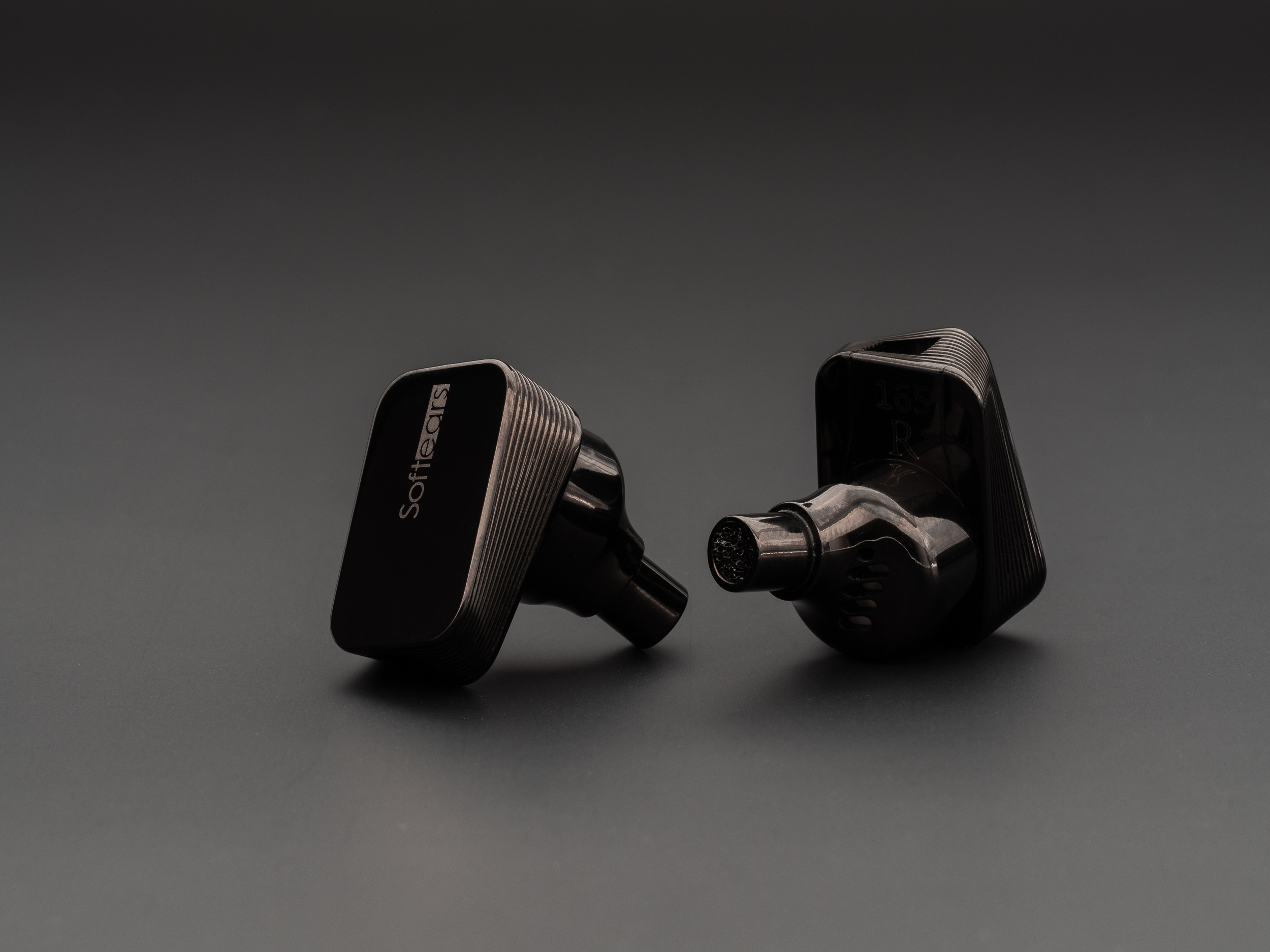
The Softears Turii is a high-end reference flagship IEM. Its unconventional design has the slogan “twist your ears” and is a showcase for the capabilities of a single dynamic driver. Fortunately, the complex construction delivers exceptionally revealing sound that adds a musical touch to linear tuning. Read my review to find out how it compares and if it’s worth the high price.
Quick Navigation
Softears
Softears is a new IEM brand from Chengdu that has its roots deep in the audio scene. It should come as no surprise that they have the capabilities to source proprietary technology or even develop their own drivers. The company’s R&D and production also share resources with other brands, most prominently MoonDrop. In their own country, the reception and feedback of fellow audiophiles are exceptional. I now start to understand why.
Softears does not have a website yet (this is very common in China as the internet experience there is very different). Check out their WeiBo instead.
Softears的微博
In case you have missed it, I have written a short introduction here and also reviewed the incredible RSV alongside measurements. If you don’t know me, check out my disclaimer where I write everything you need to know about my involvement with audio.

Turii by Softears
In my introductory post, I knew little about the company and its products. There was hardly any English information available. So I have requested the product descriptions from Softears and re-touched them. Here is what it says about the Turii.
Twist Your Ears
The magnetic circuit of Turii, which features an external magnet outside the housing, draws inspiration from large monitors and is a novel approach to earphones. The magnetic conduction pole is machined from a material with high magnetic susceptibility to yield more space for air vents. Turii’s magnet inside the driver unit utilizes neodymium to achieve a flux of 1.6T. While this is reminiscent of Tesla drivers, there is an important difference. Turii’s design separates the magnet from the transducer’s basket, which is constructed from a sourced copper material that is inert to magnetism. This shields the basket structure from the magnetic field.
To cancel resonances, Softears added a brass inner chamber on the driver’s rear with a total of 7 vents. This allowed them to move the air in accordance with the diaphragm and better control the air damping. Turii’s driver consists of a PEEK suspension that achieves a great damping factor and enhances the DLC dome’s movement. This allows the Turii to not only achieve excellent extension in both bass and treble but also reproduce extreme details.
Technical Specifications
- Sensitivity: 117db/1VRMS @1kHz
- Impedance: 25Ω @1kHz (±15%)
- Frequency Range: 8Hz – 42kHz (1/4’ Free Field, -3dB)
- Effective Frequency Response: 20Hz – 20kHz (IEC-60318-4)
- THD+IMD @94dB: <0.1% @1kHz
- Cable Connection: 2-Pin 0.78mm
The wild housing, which was achieved in cooperation with an external designer (who is also responsible for the name Turii, btw) was conceptualized to have an optimal resonance chamber. The way the dynamic driver is pushed from the magnetic coil is also said to be new with earphone designs. Let’s find out if it was worth the troubles.
Build, Design and Comfort
Build Complexity and Transitions
The complexity of Turii is quite high. The housing is CNC-machined and it’s as unique as only a few other IEM. Once the availability of the Turii increases, the design could turn into brand recognition. Needless to say, the build quality is excellent. There are no actual transitions between the parts of the IEM – everything is metal and created from one part per side! It’s impressive how the ripples transition to a smooth surface.
Durability and Protection
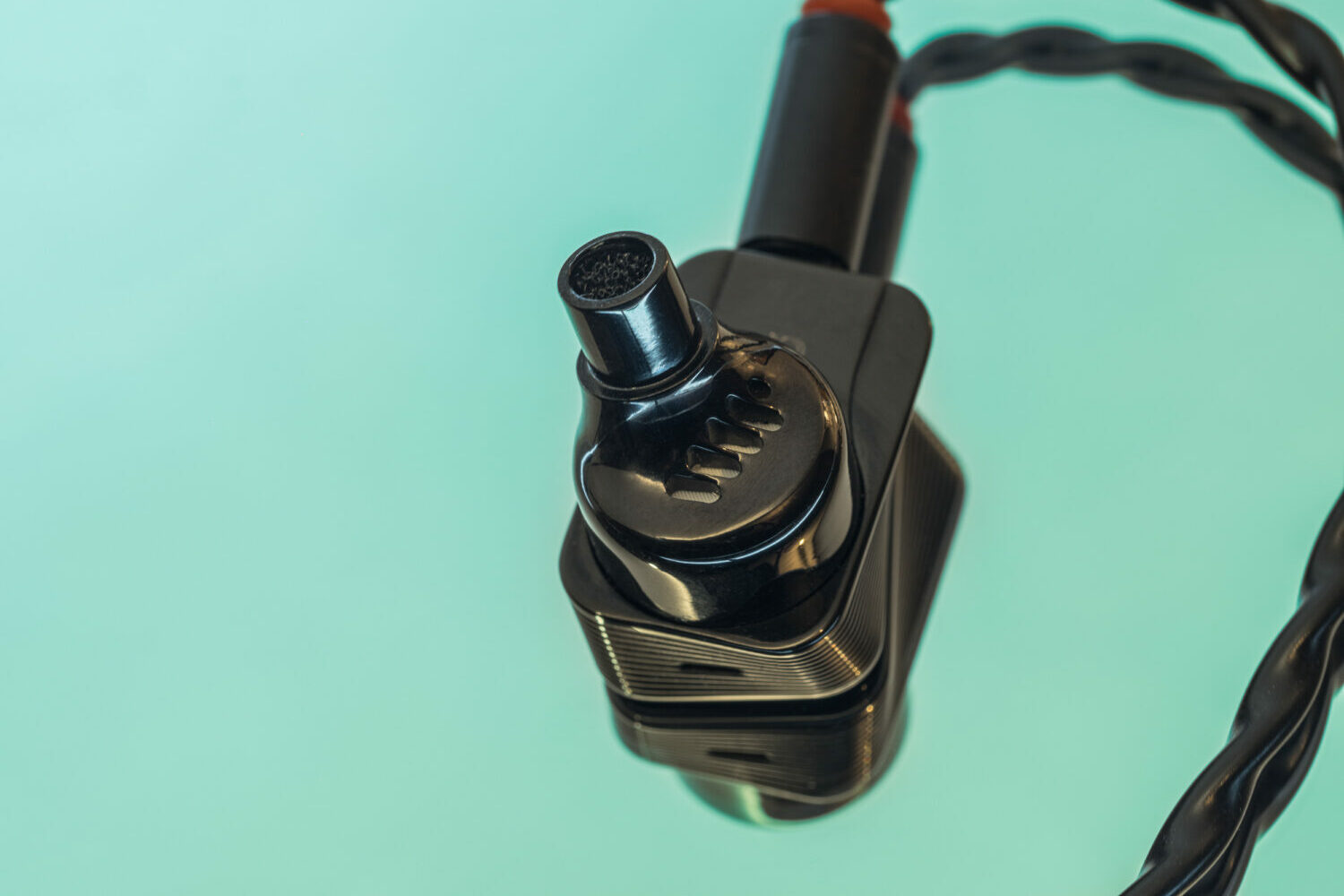
The housing definitely can take a beating, but I cannot promise that the dynamic driver inside won’t take damage from shocks. Regarding durability, I have a second minor concern. The nozzle only seems protected by foam. It would have been great to see a user-replaceable mesh, but then again this is not a stage monitor but an item you should handle with care anyway.
Ergonomics, Material Contact and L/R Indication
As a user, the ergonomics of the rectangular design might seem frightening at first, but I highly recommend giving the Turii a shot first. For me, it is more comfortable than the Campfire Solaris or final A8000. Just as with the two competitors, the weight is quite hefty. This isn’t a problem because the cable is worn over the ears and hooks the earphones in place. When worn correctly, my ear actually doesn’t touch the cold metal at all. The cable also helps to identify the left from the right side. Without the cable attached, the twisted design had me occasionally fooled.

Isolation and Ear Pressure
With all the air vents in place, I consider the IEM to be only three-quarter closed. So on one side, you won’t notice any ear pressure. However, accordingly, the isolation is rather poor when compared to the Softears RSV, for example. I recommend using the Turii in quiet surroundings.
Accessories and Ear Tips
Usually, high-end IEM come with an abundance of silicone tips, all varying in length and nozzle diameter. Interestingly, Softears includes three different tip designs that are almost identical in terms of sound-shaping. Two of those are made from foam. They improve isolation and provide a good grip. The foamies are clearly inspired by Comply T and Ts, which is not necessarily a bad thing. Compared to the included bullet silicone tips, which can’t quite match the softness and grip of the final E-tips, the foamies really smooth out the treble like the Turii was designed specifically for them. If you don’t like to use foam tips, the final E-tips will get you the closest to the optimal sound, in my experience. Any other silicone tips were too hot in the treble for my taste.
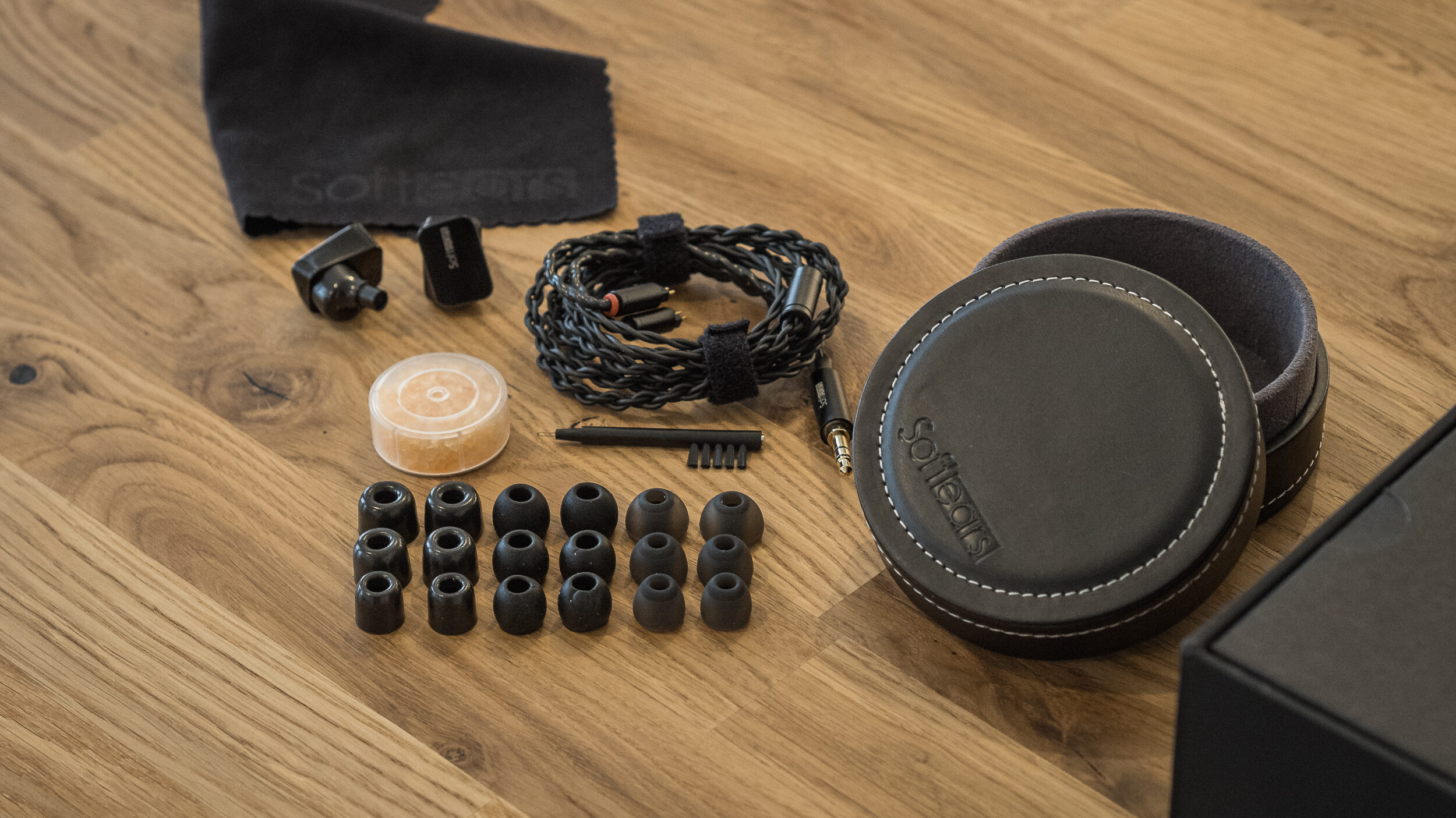
Default Cable
The included 2-pin cable is the same as the one from the RSV. Actually, I saw the cable should not be identical but also have metal design elements to match Turii. The demo sample is identical, though, and I doubt the specifications will be any different. The cable is durable, has above average thickness, and well-separated mass wires. This means there will be no issues with sound (for example crosstalk) but you will have to deal with microphonics, e.g. the unpleasant sound of bumps to the cable being transferred to your ears. (It’s a bit better because of the partly-open design, though.)
Softears Turboo
Softears also has a cable called Turboo which was specifically designed for the Turii. The specs are comparable to the DUNU Blanche so I did not find it important to check the Turboo out too. I have difficulties ascribing sonic qualities directly to a cable. That said, the Blanche is still an exceptionally great cable and I think the Turboo will be too.
Compatibility
Hiss Performance and Linear Impedance
You do not need a powerful amp to drive the Turii. Its impedance is also linear which makes it a very compatible IEM even for non-optimal output impedances. You can hear a hiss from a source if it’s not designed for sensitive IEMs, but I didn’t have any issues with my devices at all.
Source Pairing and Synergy
I am not good at describing amp sound or giving recommendations for synergy. I would agree that the Chord Mojo generally sounds warmer and more intimate than the Hugo 2, but I had a much harder time telling the difference when using the Turii. Most of the time I was just in awe about how resolving the Turii is and I would not dare to claim its qualities were limited through the use of the default cable or source at the level of Chord Mojo. It doesn’t hurt to experiment, though.
For this review, I have mostly used the Chord Hugo 2 and Chord Mojo. As always, I also used the RME ADI-2 DAC. As a fourth option, I tried a prototype of a yet unrevealed device. (Which is superb, btw, and which I can already recommend. You will know what it is next month!)
Sound Tuning
Following my Softears RSV review, I doubt there will ever be another IEM to be closer to my personal reference target. (Apparently, the RS10 is also very close. We will have to find out at another time.) But I always stressed that perceived neutrality is not necessarily the key to the best possible experience with music. The Turii proves this case and legitimately has a slightly different tuning than RS10 and RSV while preserving accuracy where necessary. The Softears Turii has a generally neutral tuning with a very natural sound. Compared to a flat reference curve, low-end and high frequencies are enhanced for more musicality. The way it’s done is really to my liking.
Raw & Compensated Frequency Measurement
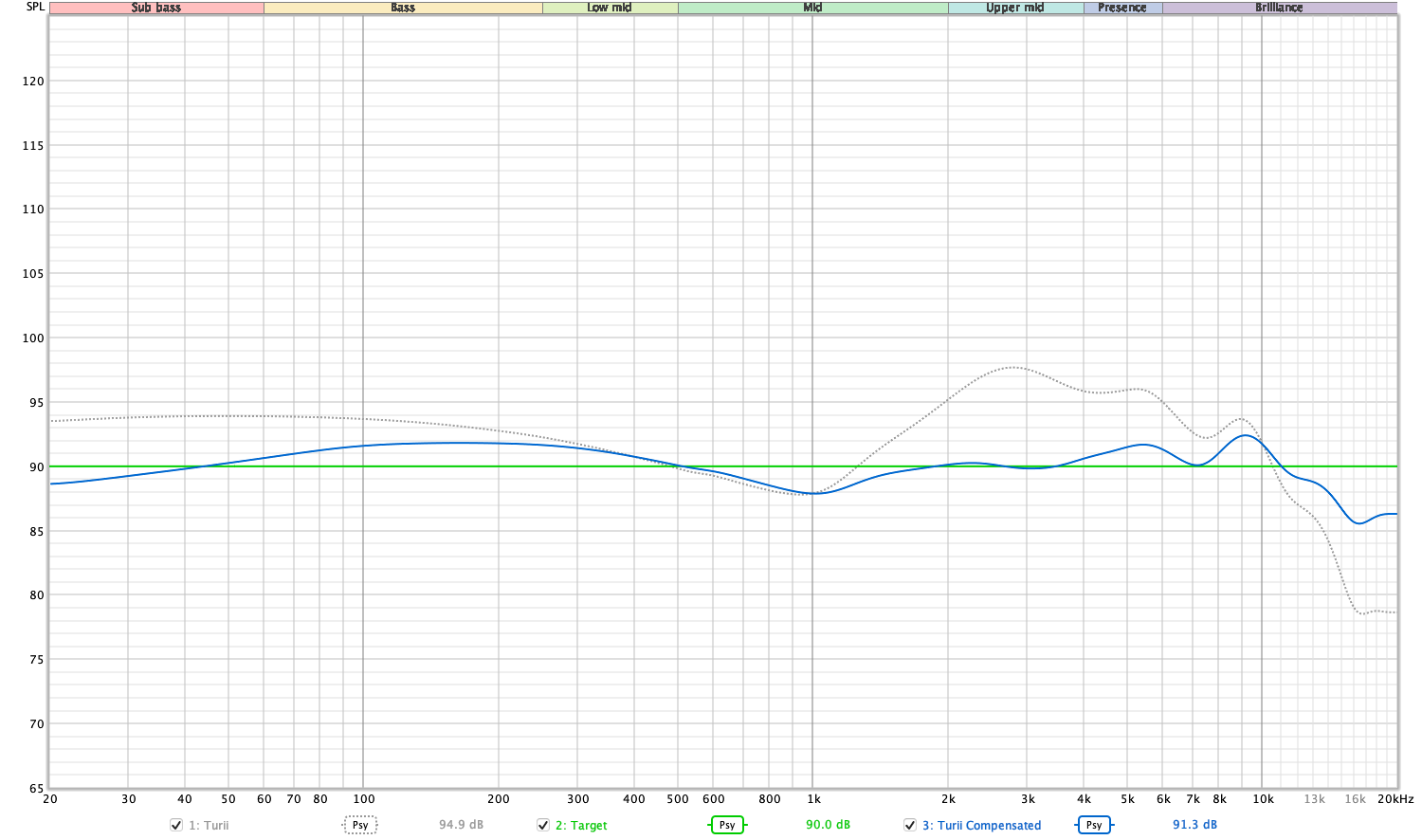
Bass Tuning
The bass is basically flat and evenly elevated. This sets the Turii apart from typical v-shape signatures as body and texture are preserved without rumble and boom stepping in the foreground. The moderate elevation makes sure that the music retains a present low-end drive but never obscures the midrange. At merely 4-5 dB above Etymotic’s target, the Turii does not count as bass-heavy. Especially since the weight is also counter-balanced by the treble. This allows for high dynamics without seeming colored.
Midrange Tuning
The bass transports a mild dose of warmth into the midrange. This minor bleeding gives fullness to vocals. Do not be mistaken, voices and instruments don’t sound warm or even dull at all! The vocal presence is nicely recreated and will appeal to experienced listeners that appreciate a tonally accurate timbre. You will notice a small dip around 1 kHz in the frequency response. From my experience, this translates similarly to a late rise of the pinnae compensation, which is very often seen with magnetostatic headphones from Hifiman, MrSpeakers, or also the AMT-based HEDDphone. My impressions indicate that this increases the perceived distance between the listener and recreated vocals. Which, based on Turii’s warmth, would otherwise possibly sound very forward.
Treble Tuning
Unsurprisingly, the tuning of the treble is quite dependent on the ear tips. The Turii includes one design for silicone tips and two for foams. Either included foam tips flatten the treble curve to the refined level of the RSV or even better. Since the Turii comes packaged with different types of foam tips, I will assume they were designed to be used with them and this is actually how I liked Turii the most. Silicone tips can be hot or even bright, IMO. Either way, it is not a peaky treble at all. The treble tuning is indeed exceptional with or without foam tips.
I previously teased the Turii sings. This is one IEM that is as addicting as I ever experienced. The Turii manages to swallow me up and makes me get lost in the music completely. Impactful bass, natural midrange, and detailed treble… there is nothing lacking and each element for itself is highly polished. Take care of your health, this is one of those IEM that keep you raising the volume and dancing to it!

Sound Quality
Though tuning is important, it isn’t everything. Some things are not easily interpretable from a frequency graph. After weeks of daily use and a lot of comparing, these are my impressions.
Bass
It seems impossible for me to listen to the Turii and not move my feet! The rhythm section is on point with everything I throw at it. But punch isn’t everything. The single dynamic driver also goes very low and maintains strength to every note.
I went through an abundance of Metal records to find an example where the drums would start to smear with low-tuned bass guitars but I eventually gave up. The stereotypes of dynamic drivers don’t easily suit the Turii. The bass-reflex design seems extremely optimized. Turii gives me all the texture details of cello strings, the punch of modern pop music, and the deep rumble of a dramatic soundtrack.
Mids
If I have given the impression that the bass steps in front of the midrange, I apologize. This is absolutely not the case. vocals are placed front and center where they belong. There is no sense of narrowing whatsoever. The midrange is airy and well separated.
Compared to other single dynamic drivers, Turii’s midrange is surprisingly neutral. Generally, it seems to be easier to tune Balanced Armature drivers for the midrange due to their origin of being designed for hearing aids where accurate reproduction of the vocal range is a priority. You rarely get this from dynamic drivers and definitely not as polished as with the Turii! The vocal presence is extraordinarily well recreated what just shows how well my understanding of in-ear monitors matches that of Softears.
Vocals have a very elaborate dimensionality to them, that together with the tuning, makes them as realistic as I ever heard from a dynamic driver. Voices are front but not upfront. The space and air around them tie the bass and treble together as I’ve rarely heard.
Treble
There are an amazing smoothness and liquidity in the higher frequencies that the Turii recreates effortlessly. The treble is extremely refined and equally boosted in the same amount as the bass. Amazingly, I perceive it as just as flat and well-tuned as the rest of the frequency range. The Turii even challenges the company’s own tuning-reference RS series.
The treble extension exceeds my hearing capabilities. Even with foams, I can easily hear past 16 kHz and not even notice any dips or peaks. The sense of air is absolutely astonishing and gives the audio so much more space. Fortunately, it doesn’t create a presence where there is none. So I even enjoy listening to “rough” audio (Garage Rock, Thrash Metal, YouTube videos) without that the Turii gets annoying.
Resolution
The Turii continues to smite me with details I never noticed before. I have to go back to the A18t or A8000 to check if what I am hearing was always there already – and it is. I had initially started with a “first impressions” paragraph saying I noticed burn-in and there was a crackling noise at first. But it turns out all the scratchiness I noticed was due to the music and artificial vinyl noises from the producer (seems to be very popular with many vocal tracks). I deleted the paragraph.
The amazing thing is that these details aren’t even pushed forward. They are easy to hear but do not sound out of place. I actually enjoyed listening to Rock a lot with the Turii. Shouting vocals, distorted guitars, and splashing cymbals did not distract from the energy and fun in the music – something I can’t always claim using other high-end IEMs that want to impress with technicalities.
Soundstage
The Turii has the advantage of being fairly open. The complex air vents help to expand the soundstage outside the listener’s head. Nothing sounds forward or in your face. Single driver designs are often praised for their homogeneity compared to multi-driver IEMs. The Turii is no different in this regard. The imaging on stereo tracks is precise and accurate. Individual instruments are separated and layered with an accurate position in a surrounding semicircle.
As far as IEM soundstages go, this is probably as large as it gets without obstructing phase or frequency response.
Music Pairing and Comparisons
Vocal
The Turii is among the best IEM I know for vocals. The refined tuning works wonderfully with dimensionality and high resolution. This level of realism is extremely rare to come from an IEM. The 64 Audio U12t pulls up head-to-head and excels with vocals in its own way. If this genre is of your preference, you should definitely try both of these IEM.
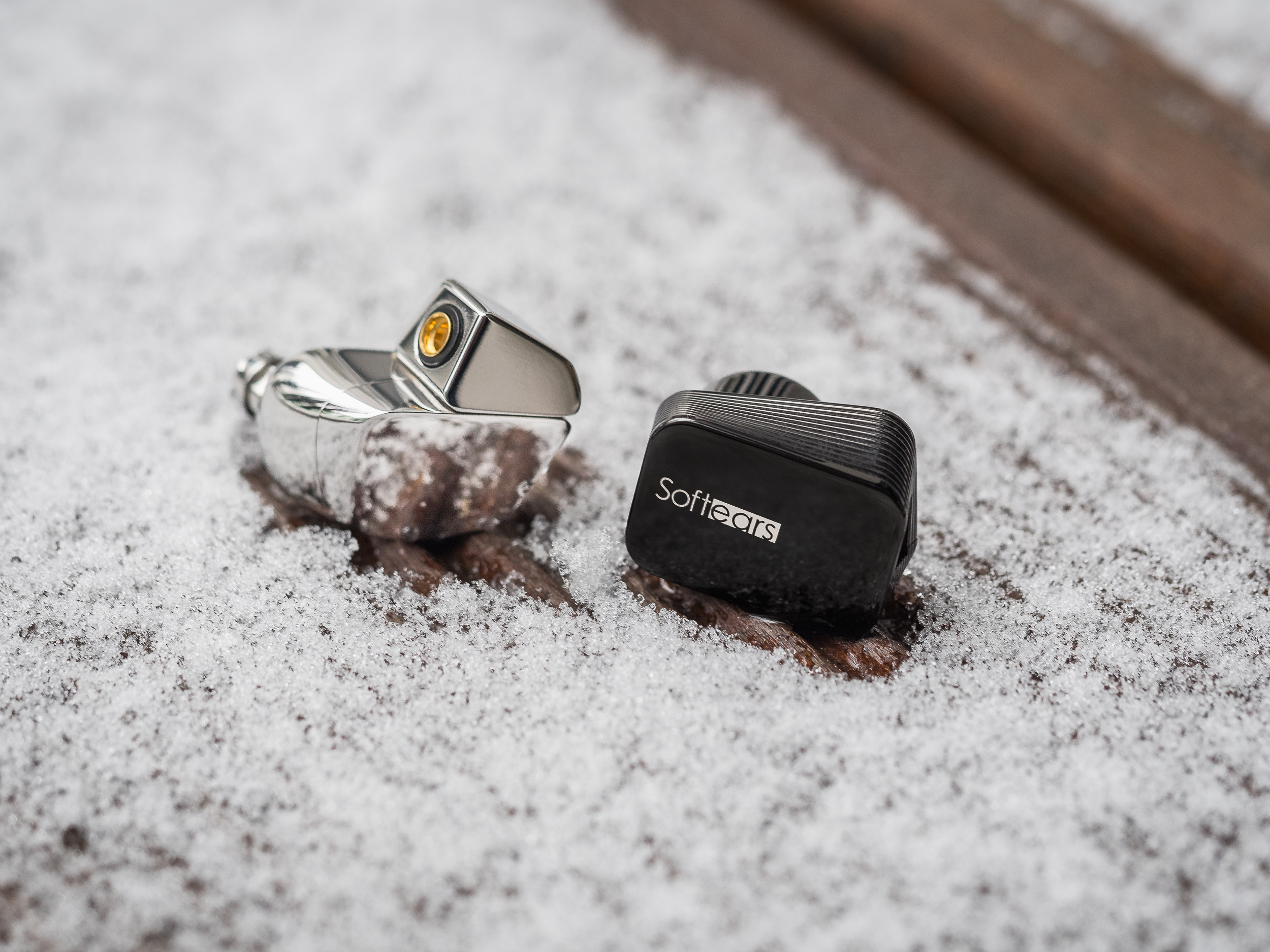
I’ve been A/B-test comparing the final A8000 and the Softears Turii back and forth. Their bass is very differently tuned, but neither ever seems to lose control. The A8000 has more treble, but both perform extremely well with micro details. Also in the midrange, multiple vocal layers are picked apart just as well by either IEM. Also the soundstage of proportionally the same size. Technically, this is a head-to-head race with no clear winner from my side. Ultimately, for me, it’s the tonality and timbre that decide clearly in favor of the Turii.
Rock
The Rock & Alternative genre is often the Achilles heel for a high-end IEM. Not over-pronouncing the crunch and edge of electric strings do not go easy if the design is also supposed to impress with details. Both 64 Audio monitors, U12t and A18t (not including U18t) do this very well. Lastly, I also claimed the DUNU Luna is one of the best IEM for Rock.
Like the DUNU Luna, the Softears Turii has nice full-bodied bass and accurate mids. In some ways, the two single-DD flagships aren’t that different. Luna has more attack and a greater sense of speed. Turii does have more realism, but usually, none of that is left in a compressed Rock album. I absolutely love the Turii for Rock, but I feel like Luna might be suited even better.
Jazz
Complex Jazz records come to life through accurate timbre and great layering. This is where multi-BA IEM usually step forward and take their place. And I have to admit that I slightly prefer the usual suspects for this kind of music. However, the Turii is far up my list and multiple positions above any other dynamic driver (hybrid or not). I might even prefer the Turii for non-improvised Jazz with wind instruments that emphasize melody. That is where the Turii unfolds the emotions captured on the audio track and where it shines more than any IEM I know.
Classical
The Turii is a great match for Classical. It has a great soundstage, excellent detail retrieval, and an expansive treble. Though technically equal, I think the A8000 creates an even better experience for this genre. Orchestras have a lot of information in the upper bass and lower midrange and the tuning of A8000 creates a more widened experience whereas this is the only time I found the fullness of Turii slightly distracting.
Rap/Hip-Hop
Dynamic drivers really add to the voluminous low-end in Rap music. You probably shouldn’t be looking at a high-end IEM for this genre, but I have to admit that I enjoy this genre a lot too. The vocal clarity of Turii is amazing! The times I used to ask myself “how did people figure out the lyrics” are long gone. But Mumble Rap is a thing now and the Turii will help you greatly to figure out the gibberish. If you’ve got the cash, the tia Trió or Fourté might even pull you in deeper into Rap music.
Check out my detailed *sort-of review* of the 64 Audio tia Fourté.
Electro
In my Luna review I recommended the Campfire Solaris for Electro instead. I claimed its bass has better slam and rumble. Actually, the bass curve and performance of Turii and Solaris are very similar. However, the midrange and treble of Turii are far better unless you prefer a warm midrange and recessed yet peaky treble and can live with a diffuse soundstage.
Yes, I am saying the Turii is technically (far) ahead of Solaris. Of course, that is no guarantee that you will prefer the Turii. Coming from the Solaris you will perceive the Turii as shouty and hot. I recommend giving the Turii a try anyway, and if you try more genres, the Turii should win you over. BTW, I found the Turii to be more comfortable, and of course – due to its design – it does not have driver flex.
Verdict
High-Fidelity is a science. I always try to present myself as a conservative user who prefers linearity. But I also do not forget what music is for, like the time I described what it’s like to be an audiophile. I wrote a feature on the 64 Audio Fourté on how a design not following the textbook can add to musicality and, ultimately, realism in audio reproduction. The Turii is just such a case. It brings the audio to life!
The design is bold, though the size is much smaller than it appears on images. Nonetheless, there will be a few ears that will find discomfort in the heavy metal build, but I have to recommend that you give the Turii and its complex absorber chamber a shot. In my mind, it is the best single dynamic IEM I have yet heard!
Whether I want pure music, all the details, a tight and punchy bass, to notice audio compression in a track, hear a producer’s signature or have a dynamic sound to swallow me completely, I pick Turii. This is an outstanding sound performance! Respect!
@16bitaudiophile

Sounds like Onkyo E700M, which was the most stunning revelation in an IEM ever produced. Punched way above its price point, to the extent that a 1000 USD+ Campfire Audio product I heard next to Onkyo (at 99 USD) seemed plain.